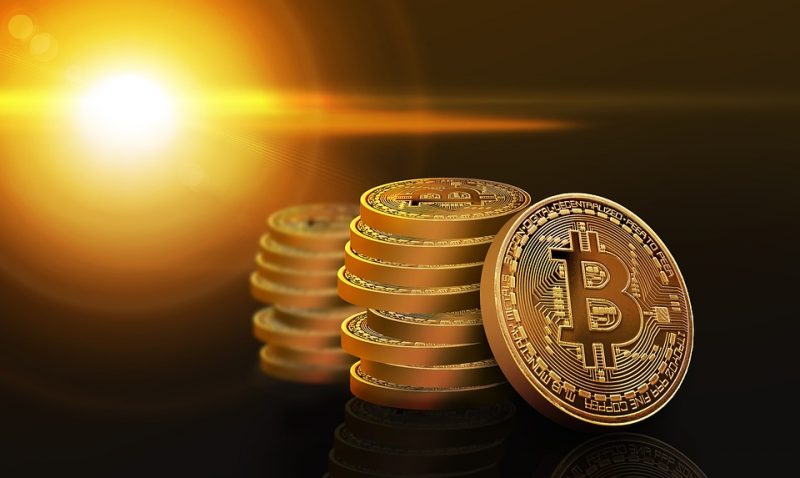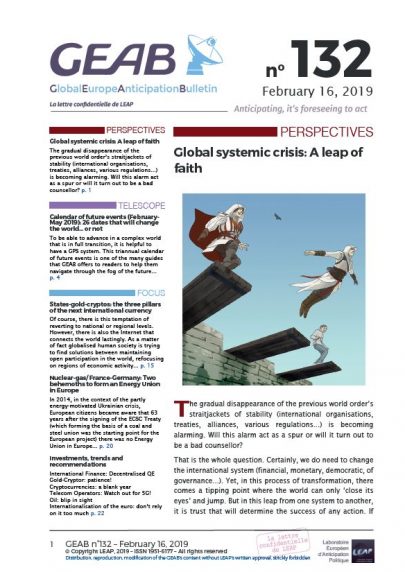GEAB 132

Of course, there is this temptation of reverting to national or regional levels. However, there is also the Internet that connects the world lastingly. As a matter of fact globalized human society is trying to find solutions between maintaining open participation in the world, refocusing on regions of economic activity, reinventing national added value, and optimizing the degree of anchoring to reality that cities provide. Solutions capable of integrating all these levels exist thanks to new technologies and the networking model in general.
It is in this context that we must place the reflections currently being carried out by the international bodies in charge of conceiving the next world monetary system – reflections made more urgent by the dollar’s return home. In monetary terms, if we combine new technologies (cryptocurrencies, virtual currencies), the mandatory global dimension, the need to re-anchor the system and the inevitability of states, some solutions emerge: a mix of monetary virtualisation offset by the support of gold, all guaranteed by the only level of governance connected to citizens i.e. the State. One can then imagine an international monetary system technologically unified by the blockchain, anchored in national gold reserves that are networked through it and embodied in national denominations: crypto-dollars/Swiss francs/yuan… supported by gold.
Let’s look now at the current events which seem to be heading in this direction…
Login

The gradual disappearance of the previous world order’s straitjackets of stability (international organisations, treaties, alliances, various regulations...) is becoming alarming. Will this alarm act as a spur or will it [...]
To be able to advance in a complex world that is in full transition, it is helpful to have a GPS system. This triannual calendar of future events is one [...]
In 2014, in the context of the partly energy-motivated Ukrainian crisis, European citizens became aware that 63 years after the signing of the ECSC Treaty (which, forming the basis of [...]
Have you noticed that all the efforts to regulate debt, derivatives, banks etc., made following the subprime crisis and meeting with varying degrees of success over the last ten years, [...]
A reminder that our recommendations are not for speculative purposes, therefore short-term, that they don’t aim to win more, but rather to lose less (even nothing) because in the case [...]

Comments